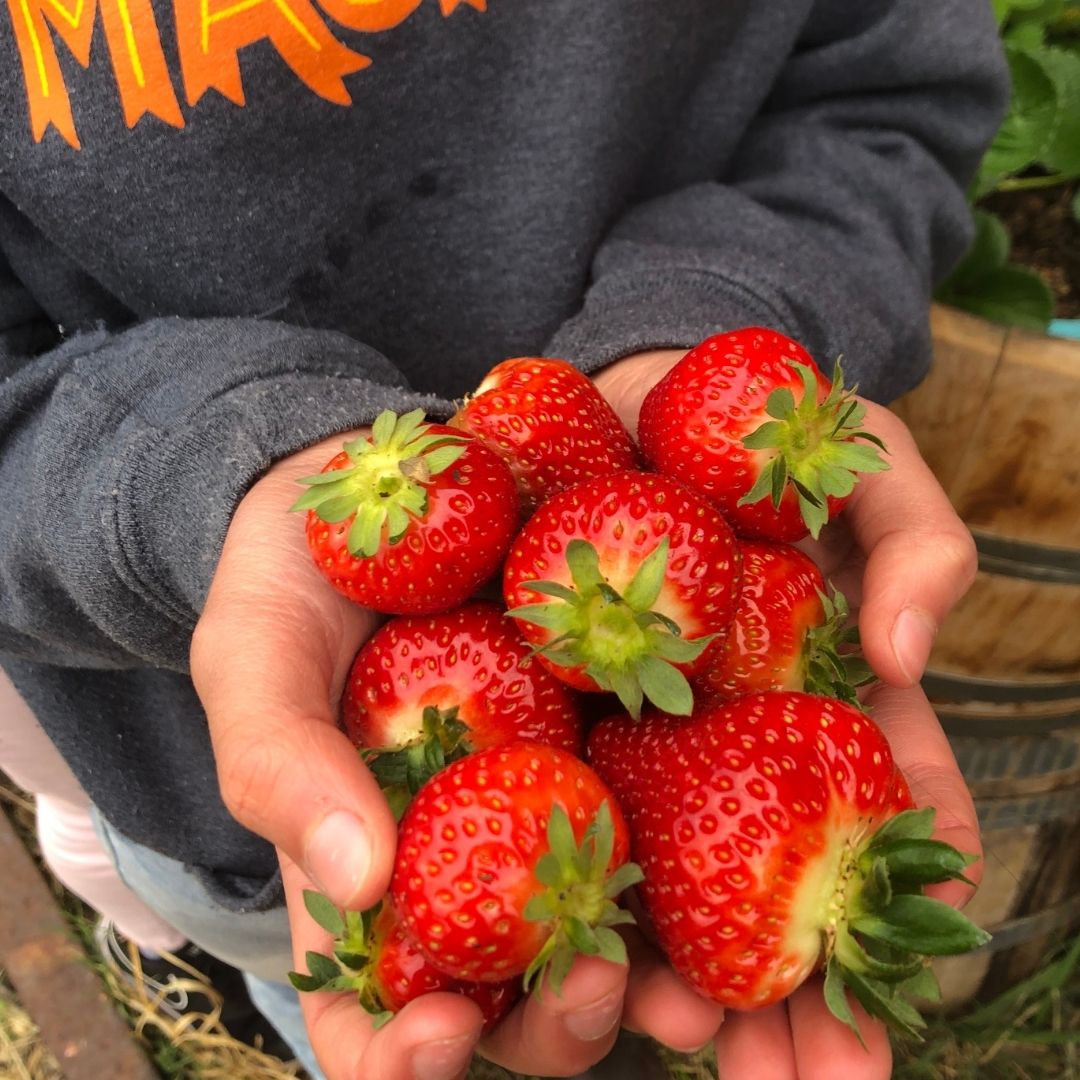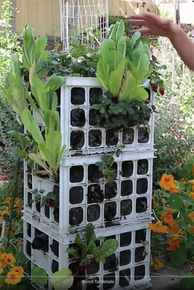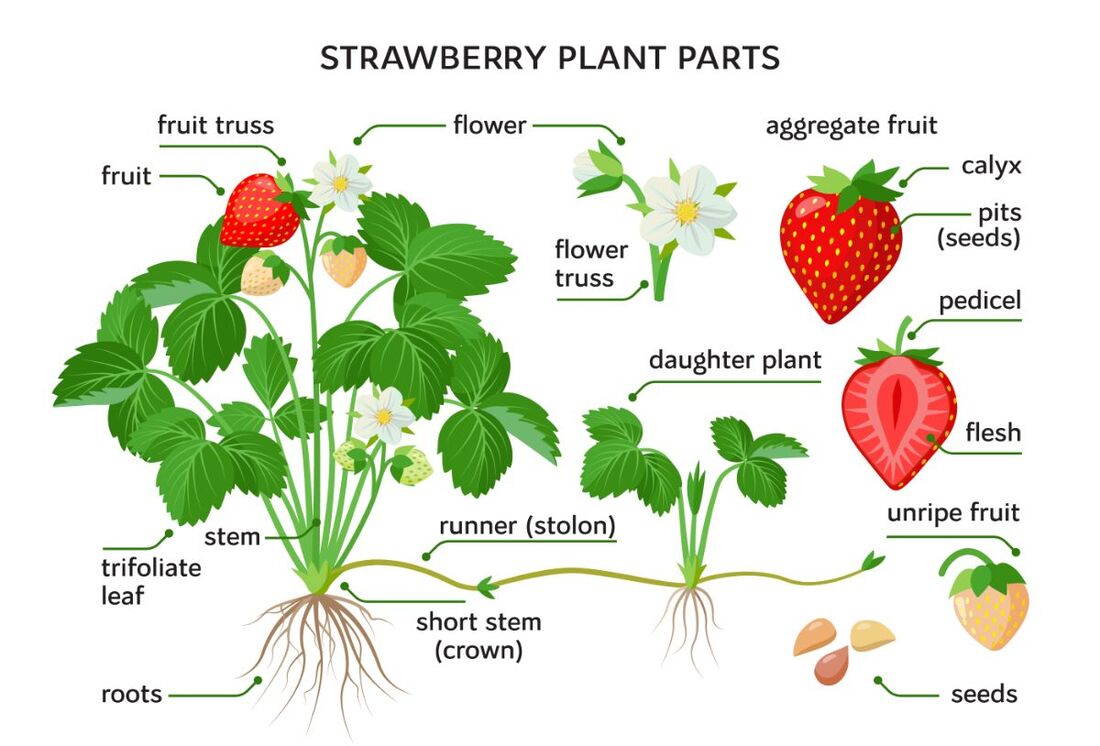Strawberries Tips and Tricks
|
Sweet Berries
Growing strawberries in the school garden brings so much joy for students because for most there’s nothing quite as sweet as picking a sun-warmed ripe strawberry! |
Strawberry Growing and Harvesting Tips
|
Strawberries are easy to grow in most soils (pH 5.5-7, prefer loam), and require 6-10 hours of sun to produce berries.
Choosing strawberry varieties suited to your climate and desired harvest is important. There are June-bearing, day-neutral and ever-bearing categories, and several varieties within each. Master Gardeners has a good article on all things strawberry HERE. Your local nursery expert may know the best varieties for your micro-climate too. |
|
Make a Strawberry Lettuce Crate. This video shows you how!
|
They grow well in raised beds and self-propagate with runners (daughter plants) that will root and become new plants.
Position daughter plants 10” apart and clip the runner once established. Strawberries have shallow roots with a crown, require steady watering over the summer and mulch to reduce stress, so summer garden oversight is important for their survival. Add compost twice a year - in Spring and Fall. Because fruiting will be low the first year, the Farmer’s Almanac recommends removing blossoms so plant energy goes into root development. Berry yields will be greater the following year. Mother plants should be replaced once yields decrease, typically after 4-5 years. |
Deter birds with mylar tape or balloons with scary eyes. Row covers keep birds and most critters away. Weeding and spreading sand or gritty mulch in the strawberry patch will help keep slugs, snails and other bugs at bay. Diatomaceous earth is often used in home gardens, but not recommended around students. Grow bag fabric “pots” are useful to keep the berries off the ground. Farmer’s almanac is a great source for more planting and harvesting tips https://www.almanac.com/plant/strawberries.
Before they are ripe...What to do?
|
Why not draw, paint, or watercolor?
Sketching a strawberry plant and labeling its parts builds on acquired knowledge of plant parts, diversity and how they reproduce, or propagate. While they are drawing, whip up a Chocolate Strawberry Smoothie recipe for a warm weather treat and watch their eyes widen to learn that this is NOT a milkshake, but a drink packed with vitamin C and fiber! |
To encourage healthy habits and inspire future chefs, check out the complete Smoothie Lesson - including video and recipe template so students can create their own smoothie recipe online (create an online class Smoothie Cookbook - or a print version for next year’s school garden fundraiser!)
Where DO strawberries get their name? Did you know strawberries are botanically in the rose family? Find fun historical facts about these indigenuos plants here: https://www.thespruceeats.com/history-of-strawberry-1807668
If you are a lucky school gardener with an established strawberry patch, turn them into Strawberry Sushi in the garden! Class-sized recipe can be found here.
Where DO strawberries get their name? Did you know strawberries are botanically in the rose family? Find fun historical facts about these indigenuos plants here: https://www.thespruceeats.com/history-of-strawberry-1807668
If you are a lucky school gardener with an established strawberry patch, turn them into Strawberry Sushi in the garden! Class-sized recipe can be found here.




